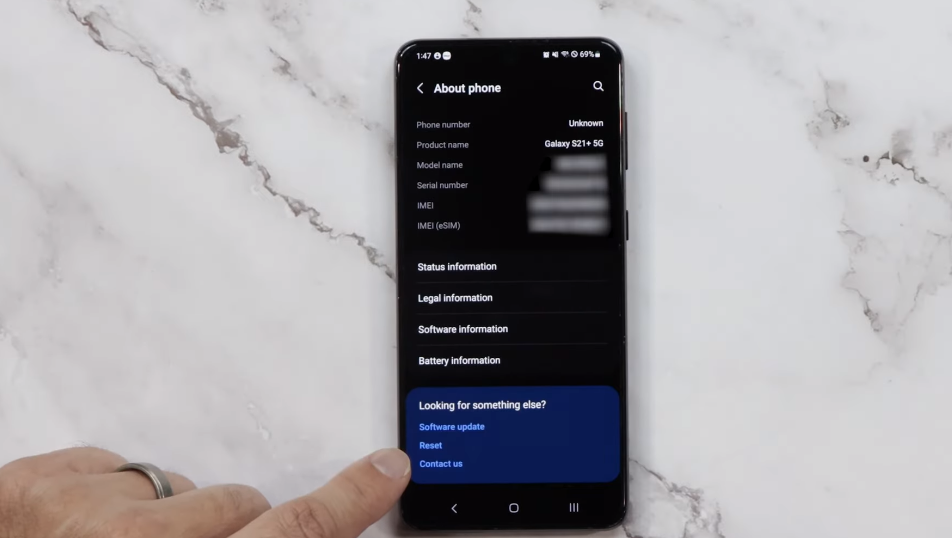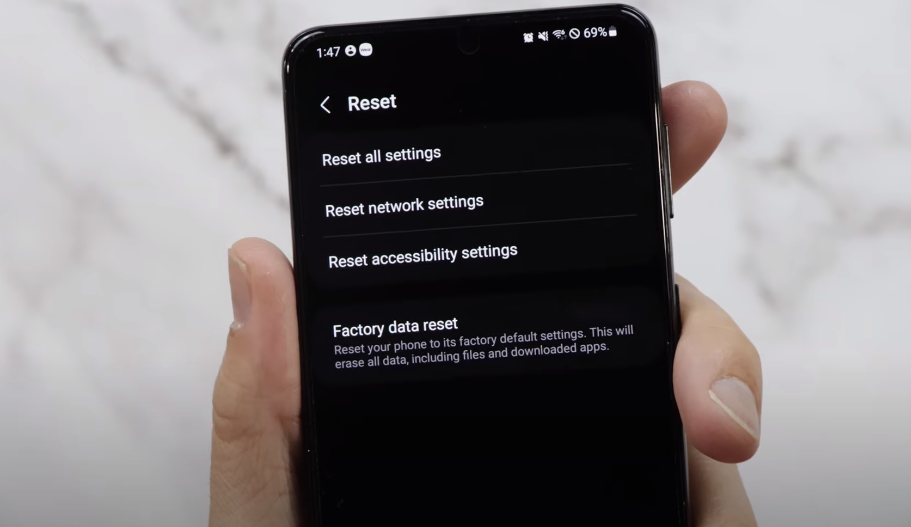Significance of Factory Reset

A factory reset is a process that restores a device to its original settings, erasing all data and settings that have been added since it was first manufactured. This can be useful in several situations, such as when a device is malfunctioning or when it is being sold or given away. One of the main benefits of a factory reset is that it can help to resolve software issues that may be causing a device to perform poorly.
Method of Factory Reset

To perform a factory reset, please follow these steps:
1. Go to your device settings.
2. Look for the “Backup and reset” option.
3. Tap on “Factory data reset.”
4. Read the warning message and then tap on “Reset phone” or “Reset device.”
5. Enter your device’s PIN or password if prompted.
6. Tap on “Erase everything” or “Delete all” to confirm the reset.
Exploring Data Storage on Devices

To explore the data stored on your device, you can follow these steps:
1. Go to your device settings.
2. Look for the “Storage” or “Storage and USB” option.
3. You should see a breakdown of the storage usage on your device, including how much space is being used by apps, media, and other files.
4. You can tap on each category to see more detailed information about what is taking up space.
5. From here, you can also clear cached.
Overview of Storage Mediums
There are several types of storage mediums available, including hard drives, solid-state drives (SSDs), flash drives, and memory cards. Hard drives are traditional spinning disk drives that offer high capacity and lower cost per gigabyte. SSDs, on the other hand, use flash memory and have no moving parts, making them faster, more durable, and more power-efficient. Flash drives and memory cards are portable storage devices that can be easily plugged into a computer or other device. They are typically smaller in capacity but offer convenience and portability.
Understanding File Systems And Data Organization
File systems are how data is organized and stored on a computer’s storage devices. Different operating systems use different file systems, with some of the most common being NTFS, FAT32, and HFS+. The file system determines how files are named, organized, and accessed on the storage device. When organizing data, it is important to create a logical system that makes it easy to find and access files.
Factory Reset vs. Data Wiping

When it comes to wiping data from a device, there are two main methods: factory reset and data wiping. A factory reset restores a device to its original settings, erasing all user data and applications. However, it is important to note that this method does not completely erase the data, as it can still be recovered using specialized software. Data wiping, on the other hand, is a more thorough method of erasing data. It overwrites the data on the device multiple times, making it much more difficult to recover. This method is often used for sensitive data or when selling a device.
It is important to choose the appropriate method for your needs. If you simply want to erase your data and start fresh, a factory reset may be sufficient. However, if you are dealing with sensitive information, it is best to use a data-wiping tool to ensure that the data is completely erased and cannot be recovered.
Data Remnants and Recovery Possibilities
When it comes to data remnants and recovery possibilities, it is important to understand that even after a data wipe or factory reset, there may still be traces of data left behind on the device. These remnants can include file fragments, metadata, and other residual information that may be recoverable with specialized software. To minimize the risk of data remnants being recovered, it is important to use a reputable data-wiping tool and follow the manufacturer’s instructions carefully.
Lingering Traces of Data After A Factory Reset
It is crucial to note that even after performing a factory reset on a device, there may still be traces of data left behind. This can include file fragments, metadata, and other residual information that may be recoverable with specialized software. It is important to use a reputable data-wiping tool and follow the manufacturer’s instructions carefully to minimize the risk of data remnants being recovered.
Techniques Used For Data Recovery
There are several techniques used for data recovery, including:
1. Physical data recovery: This involves repairing or replacing damaged hardware components to retrieve lost data.
2. Logical data recovery: This involves using specialized software to recover lost or deleted data from a device’s file system.
3. Remote data recovery: This involves accessing the device remotely to recover lost data.
4. Forensic data recovery: This involves using specialized techniques to recover data from a device for legal or investigative purposes.
Expert Opinions on Factory Reset
Factory reset is a useful tool to restore a device to its original settings, but it should be used with caution. Some experts recommend using factory reset as a last resort, as it can result in the permanent loss of data. It’s important to back up all important data before performing a factory reset. Additionally, a factory resetting may not completely erase all data on a device, so additional steps may need to be taken to ensure that sensitive information is not accessible to unauthorized individuals.
Insights From Cybersecurity Professionals
Cybersecurity professionals recommend taking additional steps to secure a device after performing a factory reset. This includes updating all software and firmware to the latest version, changing all passwords and login credentials, and enabling two-factor authentication wherever possible. It’s also important to be cautious when downloading and installing new apps or software, as they may contain malware or other security vulnerabilities. Finally, regularly backing up important data to an external source can help prevent data loss in the event of a security breach or device failure.
Alternatives to Factory Reset for Secure Data Removal
There are several alternatives to factory resetting for secure data removal. One option is to use data-wiping software that overwrites all data on the device with random data, making it virtually impossible to recover any of the original data. Another option is to physically destroy the device, such as by using a hammer or drill to break it apart. If the device has a removable storage component, such as an SD card, it’s important to remove and securely erase or destroy that as well.
Advanced-Data Wiping Techniques And Software Solutions
There are several advanced data-wiping techniques and software solutions available that offer even greater levels of security for data removal. One such technique is known as the Gutmann method, which involves overwriting data on the device with a specific pattern of data that is designed to make it extremely difficult to recover any of the original data. Another technique is the DoD 5220.22-M standard, which involves overwriting data on the device with a specific pattern of data three times.
Professional Services For Secure Data Erasure
There are also professional services available for secure data erasure. These services specialize in securely wiping data from devices and can offer a higher level of security than using software solutions alone. These services often use a combination of software and physical destruction methods to ensure that the data is completely unrecoverable. They may also provide a certificate of data destruction as proof that the data has been securely erased. It is important to research and choose a reputable service provider to ensure that the data is being handled and erased securely.
Conclusion
In conclusion, securely wiping data from devices is a crucial step in protecting sensitive information and preventing it from falling into the wrong hands. While software solutions can be effective, they may not always be sufficient. Using a combination of software and physical destruction methods offered by professional data destruction services can provide a higher level of security and assurance that the data is completely unrecoverable. It is important to choose a reputable service provider to ensure that the data is being handled and erased securely.
Frequently Asked Questions (FAQs)
Can factory reset completely erase all data on a device?
A factory reset can erase most of the data on a device, but it is not always 100% effective in permanently erasing all data. Some data may still be recoverable using specialized software tools. It is recommended to use additional methods, such as physical destruction, to ensure complete data destruction.
Are there any risks involved in performing a factory reset?
Performing a factory reset can have some risks, such as the possibility of losing important data that was not backed up before the reset. Additionally, if the reset is not done correctly, it can cause the device to malfunction or become unusable. It is important to follow the manufacturer’s instructions carefully and to back up all important data before performing a factory reset.
Can data be recovered after a factory reset?
It is generally difficult to recover data after a factory reset, as the reset erases all data and restores the device to its original state. However, there are some data recovery tools and services that may be able to retrieve some of the lost data. It is important to note that the success of data recovery after a factory reset depends on various factors, such as the type of device, the storage medium, and the extent of the data loss.
Is factory reset the only method for secure data removal?
No, factory resetting is not the only method for secure data removal. There are other methods such as using data-wiping software or physically destroying the storage medium. Data wiping software can overwrite the data multiple times to ensure that it cannot be recovered. Physical destruction of the storage medium, such as drilling holes or shredding it, is also an effective way to ensure that the data cannot be recovered. It is important to choose the method that is appropriate for the level of security needed for the data being removed.
What should be done if a factory reset fails to wipe data?
If a factory reset fails to wipe data, there are a few options that can be considered. First, try performing a “hard reset” or “master reset” on the device. This involves using a specific key combination or button sequence to reset the device to its original factory settings. If this does not work, there are data-wiping software programs available that can be used to securely erase the data. These programs can overwrite the data multiple times to ensure that it cannot be recovered.
